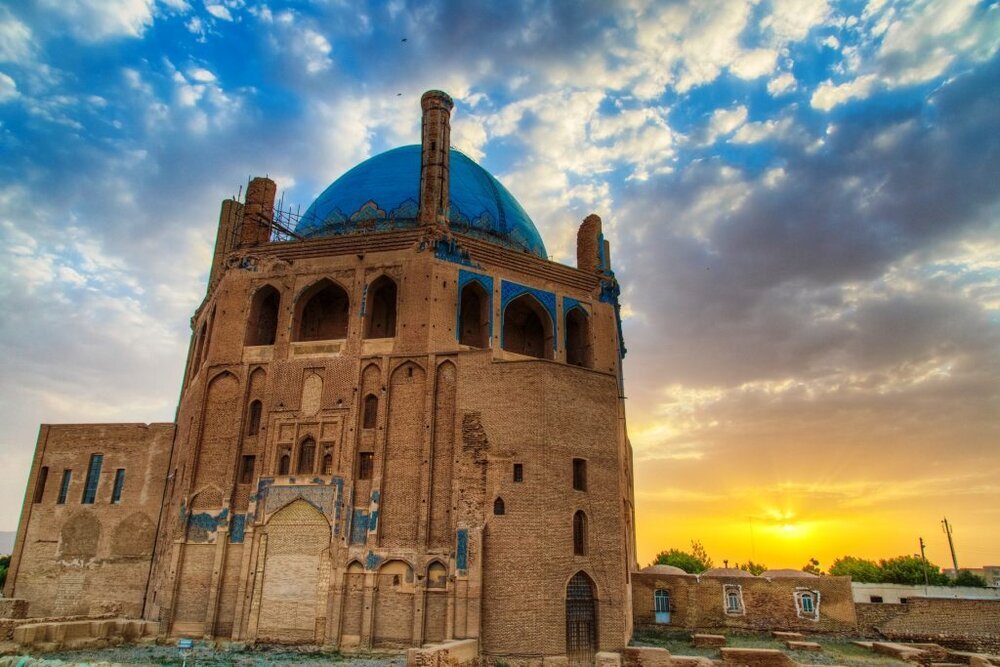World Heritage ‘Dome of Soltaniyeh’ rehabilitated

TEHRAN – Worn-out adobe brickworks have been rehabilitated at the rooftops of the Dome of Soltaniyeh, a 14th-century UNESCO site in the northwestern Zanjan province.
The project also included lightening the rooftop mass, strengthening by the use of plaster and soil, amongst other masonry works based on UNESCO criteria, Zanjan province’s tourism chief Amir Arjomand announced on Tuesday.
Strengthening and lightening the centuries-old buildings, such as the Dome of Soltaniyeh for instance, helps them withstand earthquakes and horizontal stresses, and it is one of the priorities of the province’s cultural heritage department, the official added.
As its name implies, the World Heritage is surmounted by a dome, one of the largest brick domes in the globe.
The monument stands tall in a town of the same name, Soltaniyeh, in Zanjan province. Meaning “Town of the Sultans”, Soltaniyeh was briefly the capital of Persia’s Ilkhanid dynasty (a branch of the Mongol dynasty) during the 14th century.
Why it’s called masterpiece of architecture
The 14th-century structure is highly recognized as an architectural masterpiece particularly due to its innovative double-shelled dome and elaborate interior decoration. The very imposing dome stands about 50 meters tall from its base.
The interior has long been under renovation, chockfull of scaffolding poles. However, its decoration is such impressive that scholars including A.U. Pope described it as ‘anticipating the Taj Mahal’. It is the earliest existing example of the double-shelled dome in Iran.
A great-grandson of Hulegu, founder of the Il-Khanid dynasty, Oljaytu was a Mongol ruler who, after dabbling in various religions, adopted the Shia name Mohammed Khodabandeh.
According to the UNESCO, the Mausoleum of Oljaytu is an essential link and key monument in the development of Islamic architecture in central and western Asia. Here, the Ilkhanids further developed ideas that had been advanced during the classical Seljuk phase (11th to early 13th centuries), during which the arts of Iran gained distinction in the Islamic world, thereby setting the stage for the Timurid period (late 14th to 15th centuries), one of the most brilliant periods in Islamic art.
UNESCO says, “Excavations carried out in the 790-ha Mausoleum of Oljaytu property have revealed additional vestiges of the old city, and a large part of this property has retained its archaeological character. As the ancient capital of the Ilkhanid dynasty, Soltaniyeh represents an exceptional testimony to the history of the 13th and 14th centuries in Iran.”
The very large dome is the earliest extant example of its type and became an important reference for the later development of the Islamic dome. Similarly, the extremely rich interior of the mausoleum, which includes glazed tiles, brickwork, marquetry, or designs in inlaid materials, stucco, and frescoes, illustrates an important movement towards more elaborate materials and themes.
ABU/MG
